Animals
-
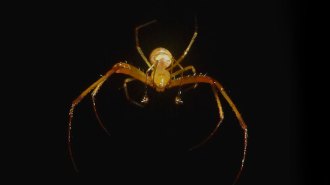 Animals
AnimalsSome cannibal pirate spiders trick their cousins into ‘walking the plank’
A pirate spider in Costa Rica uses a never-before-seen hunting strategy that exploits the way other spiders build webs.
-
 Animals
AnimalsA little snake’s big gulp may put all other snakes to shame
The humble Gans’ egg-eater can wrap its mouth around bigger prey than any other snake of its size.
-
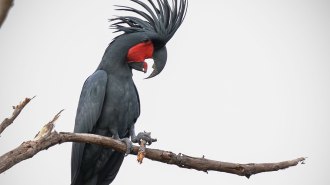 Animals
AnimalsWild male palm cockatoos rock out with custom drumsticks
Along with flashy dances and distinctive drumbeats, these birds craft their own signature drumsticks to win over mates.
By Elise Cutts -
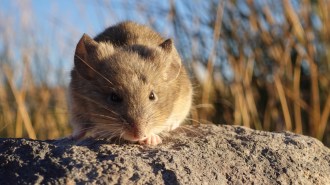 Animals
AnimalsThe world’s highest-dwelling mammal isn’t the only rodent at extreme elevation
After discovering a mouse living nearly 7,000 meters above sea level, scientists scoured other extreme environments to make sure the find wasn’t a fluke.
By Meghan Rosen -
 Ecosystems
Ecosystems‘Crossings’ explores the science of road ecology
Ben Goldfarb talks about his new book, which looks at the science that’s helping to prevent animals from becoming roadkill.
By Amanda Heidt -
 Health & Medicine
Health & MedicineScientists grow humanized kidneys in pig embryos
The work represents an important advance in the methods needed to grow humanized kidneys, hearts, and pancreases in animals.
By Amanda Heidt -
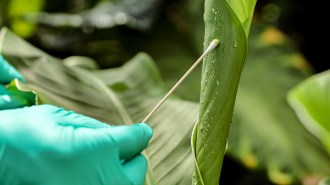 Animals
AnimalsA new DNA leaf swab technique could revolutionize how we monitor biodiversity
Simple swabs of just 24 leaves in Uganda’s Kibale National Park provided a genetic snapshot of 52 animals in the tropical forest.
-
 Animals
AnimalsAdult corals have been safely frozen and revived for the first time
Chunks of living corals could be frozen for safekeeping and revived later to restore reef ecosystems that are withering in warming seas.
By Nikk Ogasa -
 Climate
ClimateEmperor penguins lost thousands of chicks to melting ice last year
In 2022, groups of emperor penguins in western Antarctica lost almost all their chicks to receding sea ice, signaling the threat of climate change.
-
 Animals
AnimalsMacaques in Puerto Rico learned to share shade after Hurricane Maria
Animals that spent more time together on hot afternoons were less likely to die during the years following the storm, a new study finds.
-
 Life
LifeMany frogs glow in blue light, and it may be a secret, eerie language
Biofluorescence is far more common across frog species than previously thought. The faint twilight glow could have a role in communication or mating.
By Jake Buehler -
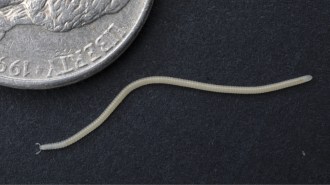 Animals
AnimalsThe newfound Los Angeles thread millipede is ready for its close-up
Found in Southern California, Illacme socal is the third of its genus found in North America, with the rest of its relatives scattered around the world.